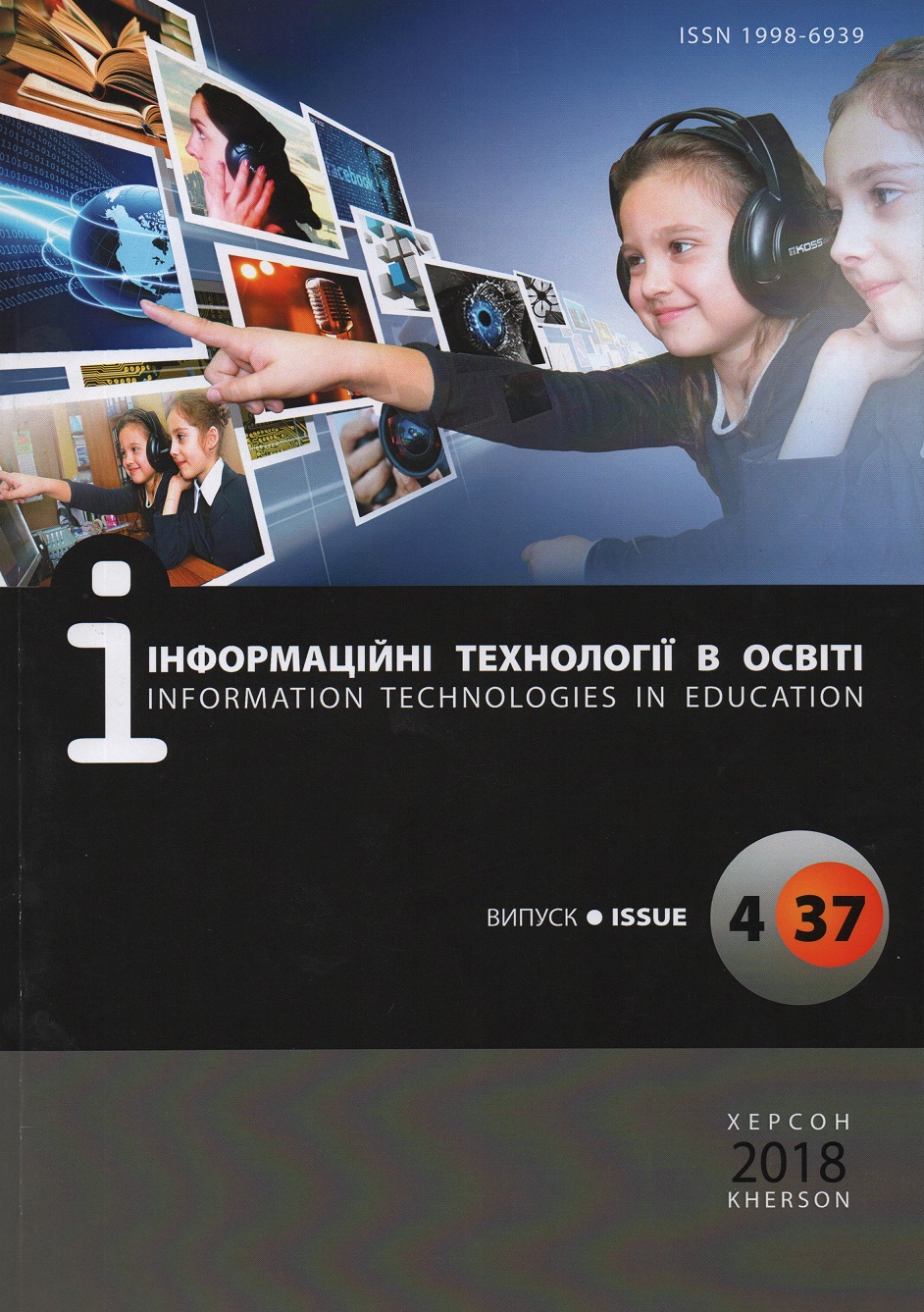APPLICATION OF TEST SYSTEMS FOR IMPLEMENTATION OF FUTURE TEACHERS EVALUATION
DOI:
https://doi.org/10.14308/ite000683Keywords:
tests, test system, measurement, future teachers, learning processAbstract
Monitoring student learning is an important part of the educational process at a higher education institution. One of the means of modernizing control and analysis of learning outcomes is the computerized testing system. The application of testing has become widespread in various areas of human activity. The introduction of testing at Ukrainian educational institutions contributes to the integration of Ukraine into the European educational space. Among the advantages of using computer tests to assess academic achievement of students is to increase the level of objectivity of the assessment, the possibility of a profound analysis of the results of available quantitative indicators, the possibility of mass evaluation with significant time saving to verify the results. However, tests in the educational process are used not only as a means of measurement, but as a means to achieve various pedagogical goals. Tests help identify gaps in the study of learning material and encourage learning, thus contributing to the development of students with the required competencies. The periodic use of tests allows to form feedback between teachers and students for effective correction the learning process. The methodology for organizing the research was the author's technique. The experiment used a questionnaire (before and after the experiment), testing (before and after the experiment). The publication argues the proposed version of the construction of a computer test system. The step-by-step algorithm allows anyone wishing to create their own system of test tasks. In the formation of tasks, the taxonomy of Bloom was used, on the basis of which three levels of complexity of test questions were developed. There have been conducted the analysis of existing copyright test systems; its results have been used when creating the author's system. The test system has been tested in higher education institutions and approved by faculty and students. Levels of mastering the educational material are determined. The results of the study of the level of usefulness of the tests and readiness for their use in the educational process allowed to take into account the wishes and disadvantages of creating a test system.
Downloads
Metrics
References
1. Bible, L., Simkin, M.G. & Kuechler, W.L. (2008). Using Multiple-choice Tests to Evaluate Students' Understanding of Accounting. Accounting Education, 17(1), 55-S68, DOI: 10.1080/09639280802009249
2. Cattell, J. M. (1890). Mental tests and measurements. Mind, 15, 373-381.
3. Karpicke, J. D., & Roediger, H. L. (2007). Repeated retrieval during learning is the key to long-term retention. Journal of Memoryand Language, 57, 151 - 162.
4. Romero, C., Ventura, S., & De Bra, P. (2009). Using mobile and web‐based computerized tests to evaluate university students. Computer Applications in Engineering Education, 17(4), 435 - 447.
5. Stephens, D., Bull, J. & Wade, W. (1998). Computer-assisted assessment: Suggested guidelines for an institutional strategy. Assessment & Evaluation in Higher Education, 23, 283 - 294.
6. Crocker, L., & Algina, J. (1986). Introduction to Classical and Modern Test Theory. Wadsworth Group, Thomson Learning.
7. Steven, J. O. (1998). Constructing Test Items: Multiple-Choice, Constructed-Response, Performance, and Other Formats (2nd ed.). Kluwer Academic Publishers.
8. Brame, C. J. & Biel, R. (2015). Test-enhanced learning: The potential for testing to promote greater learning in undergraduate science courses. CBE-Life Sciences Education, 14, 1 - 12.
9. Butler, A. C. & Roediger, H. L. (2008). Feedback enhances the positive effects and reduces the negative effects of multiple-choice testing. Memory and Cognition, 36, 604 - 616.
10. Smith, M.A. & Karpicke, J.D. (2014). Retrieval practice with short-answer, multiple-choice, and hybrid tests. Memory, 22, 784 - 802.
11. Wissman, K. T., Rawson, K. A., & Pyc, M. A. (2011). The interim test effect: Testing prior material can facilitate the learning of new material. Psychonomic Bulletin Review, 18, 1140 - 1147.
12. Bloom, B. S. (1994). Taxonomy of educational objectives: The classification of educational goals. New York: Longman.
</uk>
<en>
1. Bible, L., Simkin, M.G. & Kuechler, W.L. (2008). Using Multiple-choice Tests to Evaluate Students' Understanding of Accounting. Accounting Education, 17(1), 55-S68, DOI: 10.1080/09639280802009249
2. Cattell, J. M. (1890). Mental tests and measurements. Mind, 15, 373 - 381.
3. Karpicke, J. D., & Roediger, H. L. (2007). Repeated retrieval during learning is the key to long-term retention. Journal of Memoryand Language, 57, 151 - 162.
4. Romero, C., Ventura, S., & De Bra, P. (2009). Using mobile and web‐based computerized tests to evaluate university students. Computer Applications in Engineering Education, 17(4), 435 - 447.
5. Stephens, D., Bull, J. & Wade, W. (1998). Computer-assisted assessment: Suggested guidelines for an institutional strategy. Assessment & Evaluation in Higher Education, 23, 283 - 294.
6. Crocker, L., & Algina, J. (1986). Introduction to Classical and Modern Test Theory. Wadsworth Group, Thomson Learning.
7. Steven, J. O. (1998). Constructing Test Items: Multiple-Choice, Constructed-Response, Performance, and Other Formats (2nd ed.). Kluwer Academic Publishers.
8. Brame, C. J. & Biel, R. (2015). Test-enhanced learning: The potential for testing to promote greater learning in undergraduate science courses. CBE—Life Sciences Education, 14, 1 - 12.
9. Butler, A. C. & Roediger, H. L. (2008). Feedback enhances the positive effects and reduces the negative effects of multiple-choice testing. Memory and Cognition, 36, 604 - 616.
10. Smith, M.A. & Karpicke, J.D. (2014). Retrieval practice with short-answer, multiple-choice, and hybrid tests. Memory, 22, 784-802.
11. Wissman, K. T., Rawson, K. A., & Pyc, M. A. (2011). The interim test effect: Testing prior material can facilitate the learning of new material. Psychonomic Bulletin Review, 18, 1140 - 1147.
12. Bloom, B. S. (1994). Taxonomy of educational objectives: The classification of educational goals. New York: Longman.
</eb>
Downloads
Published
How to Cite
Issue
Section
License
This work is licensed under a Creative Commons Attribution-NonCommercial-ShareAlike 4.0 International License.






























